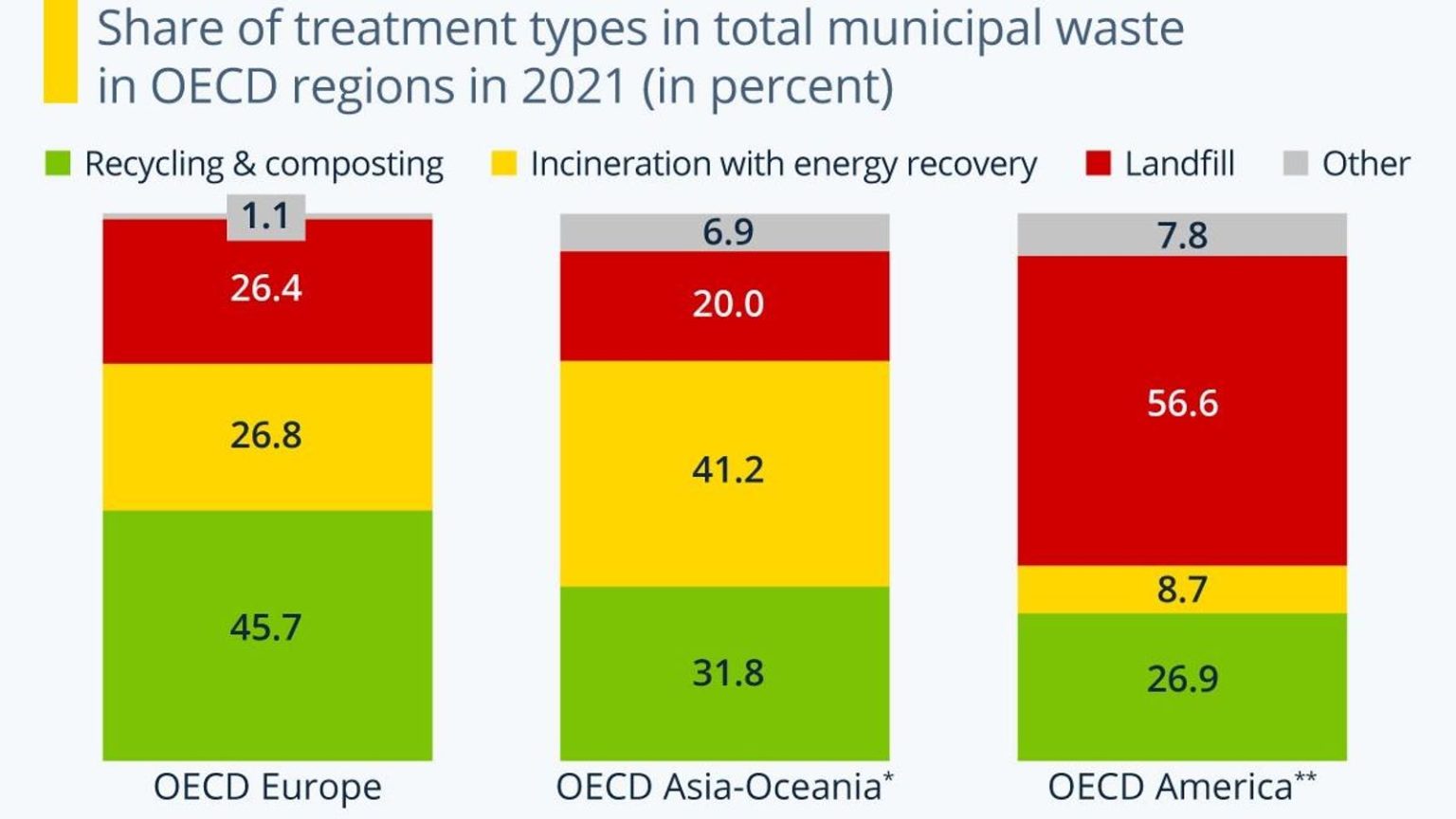Data from the OECD reveals that the American continent has a dirty secret when it comes to how it handles its trash. Almost 57% of municipal waste in the five OECD member countries on the American continent is still going to landfill. While developing Latin American nations Colombia, Costa Rica and Chile factor into the count, more than 80% of people in the OECD Americas sample live in the United States and Canada.
Only around 27% of municipal waste in the American member countries was recycled or composted in 2021, the latest year the numbers are available. This is in stark contrast to the almost 46% of waste in this category in the OECD’s 14 European member nations and also below the rate of around 32% in developed Asia-Oceania, namely Australia, New Zealand, South Korea and Japan.
The latter region also employs a method that is sometimes considered slightly better for waste which is not recycled: Incineration with energy recovery, meaning that heat energy from burning waste is reused. This approach does create CO₂ and particle pollution but has a smaller overall footprint than the burning of fossil fuels for energy production. Especially smaller or densely populated nations—like Japan, South Korea and Scandinavian countries—prefer this method as it also takes up less space. Additionally, landfilling waste can lead to environmental problems and emissions of methane, which is a more harmful climate gas than CO₂, offsetting some of the more climate-friendly aspects of landfills. While the practice of waste burning is expanding in Asia amid criticism, it hasn’t caught on in the U.S. or other OECD nations in the Americas.
Reasons why countries use landfills, according to industry bulletin Pollution Solutions, include convenience and affordability—not something well-governed and affluent North American countries would need to rely on. The ample space in the region might therefore be the biggest draw to landfill waste.
Broken recycling system
Recycling rates in North America are also way below their potential. According to the California Management Review published by the UC Berkeley Haas School of Business, a lot of recyclable materials in the U.S. end up in landfills. The report faults outdated federal standards and based on them, complicated collection practices that vary regionally for these shortcomings. It goes on to explain that differing systems and facilities’ autonomous decision making create confusion with consumers as well as unpredictability in the country’s recycling market, both of which diminish the quality of recycled materials, curb demand for it and hamper the rise of recycling as a money-making tool for industries.
94% of U.S. residents support recycling. However, the U.S. rate of recycled or composted waste stands at just 34%, slightly above the OECD Americas average. This is despite the fact that the Environmental Protection Agency estimates that three quarters of U.S. waste is recyclable. Both Florida and California had set the goal to reach a 75% recycling rate in 2020. However, the two states seem to have fallen short of it despite improvements above the U.S. average recycling rate, citing problems like wrongly sorted waste, retailers refusing to take back materials, outdated regulations and a lack of buyers for recycled waste products as reasons.
—
Charted by Statista
Read the full article here





